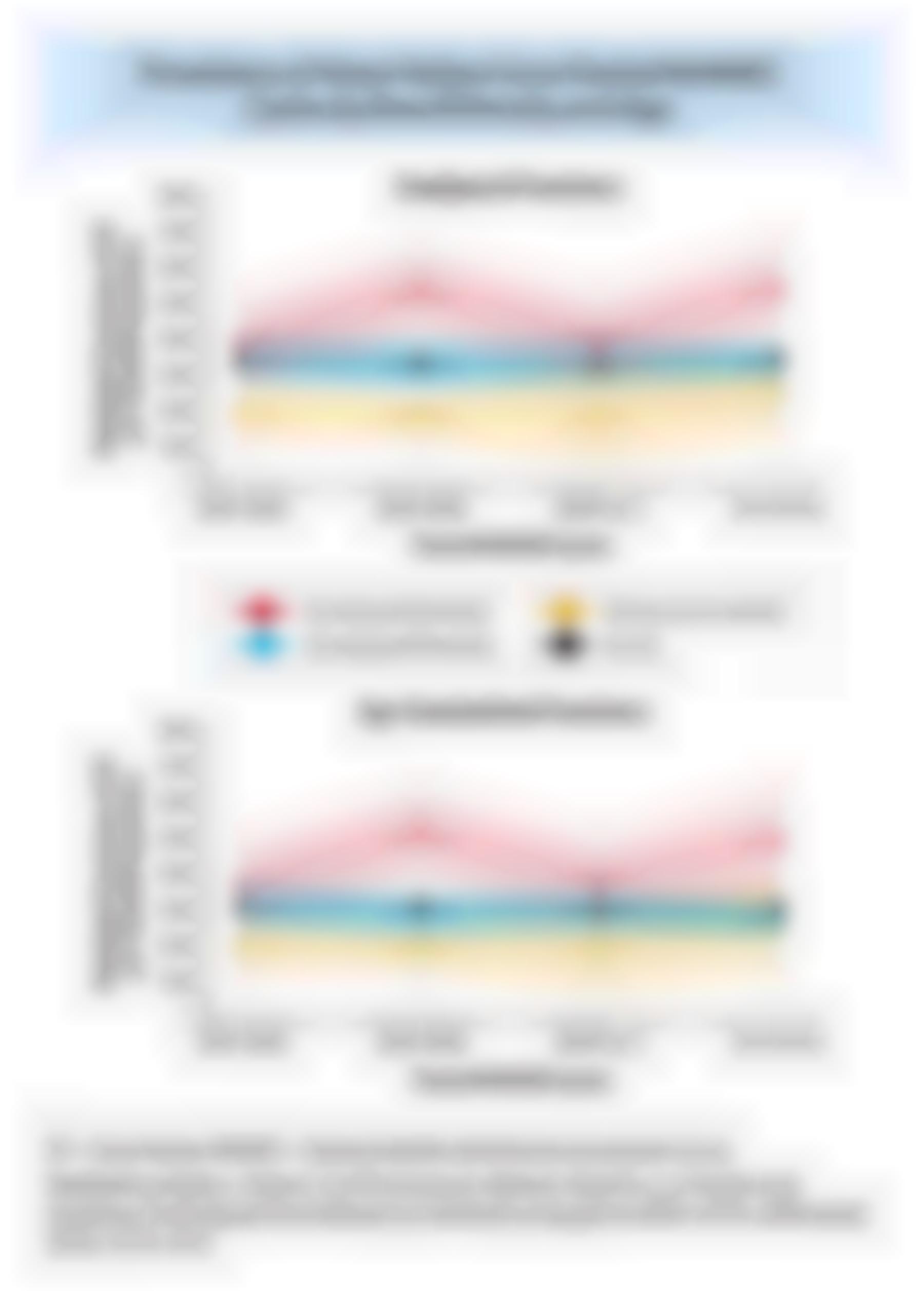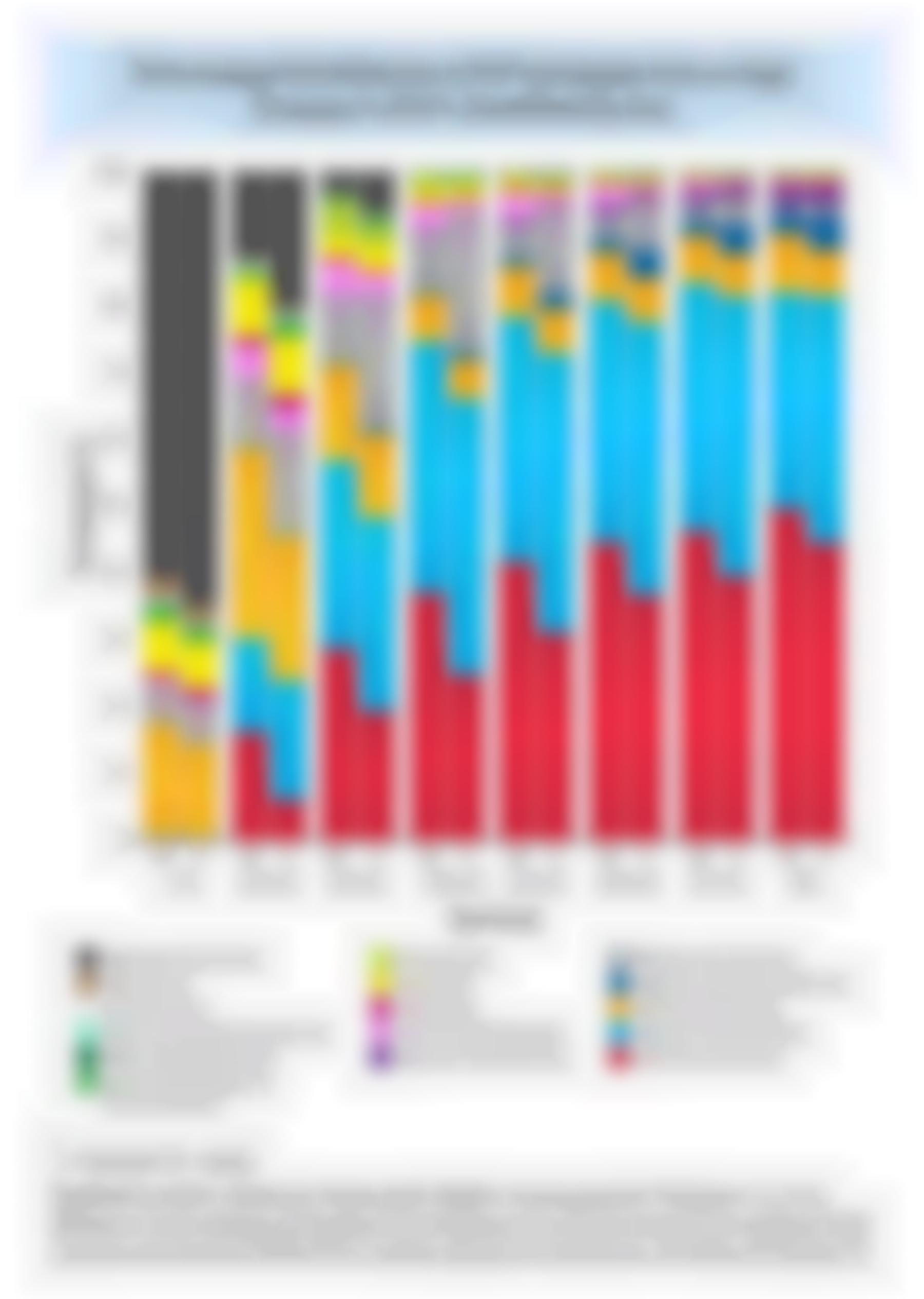The highest HF death rates have been reported in the Midwest, Southeast, and Southern states

Rural areas demonstrate higher HF mortality rates for both younger and older age groups compared to urban areas
Download the Full Report in the Journal of Cardiac Failure now!
Updated stats from the 2025 Report will be added here soon!
Key Points By Category
- Approximately 6.7 million Americans over 20 years of age have HF, and the prevalence is expected to rise to 8.5 million Americans by 2030.
- The lifetime risk of HF has increased to 24%, approximately 1 in 4 persons will develop HF in their lifetime.
- The prevalence rate of HF among US adults is approximately 1.9% to 2.6% for the overall population and is higher among older patients. The prevalence rate is expected to increase to 8.5% among 65 to 70-year-olds.
- The prevalence of heart failure with preserved ejection fraction (HFpEF) across populations is increasing, with significant differences by race and ethnicity, and women experience a higher lifetime risk HFpEF.
- Approximately 33% of the US adult population without known symptomatic HF is at-risk for HF (Stage A HF) and 24-34% have pre-HF (Stage B HF). The risk of developing HF in individuals with obesity and hypertension has increased.
- Overall HF prevalence is increasing globally, but HF incidence, prevalence, etiology, and outcomes vary across different regions around the globe.
- HF prevalence estimates around the world range from 1% to 3% of the overall population.
- The prevalence of risk factors for HF including hypertension, obesity, and smoking are increasing globally over time. The proportion of individuals with HF exhibiting 3 or more comorbidities increased from 68% in 2002-2004 to 87% in 2012-2014.
- Disparities in social determinants of health (SDoH) and health inequities are important HF risk factors and result in increased mortality and other adverse outcomes in individuals at risk for HF or with HF.
- HF mortality rates have been increasing since 2012, with a more pronounced acceleration in 2020-2021.
- The age-adjusted HF mortality rates were higher in 2021 than in 1999.
- HF was a contributing cause in approximately 425,147 deaths and accounted for 45 % of the cardiovascular deaths in the US in 2021.
- Among ambulatory chronic HF patients, the 1-year mortality rate is estimated at 13.5%.
- Among US patients 65 years and older hospitalized for HF, the 1-year post-discharge mortality rate is estimated at 35%. The estimated mortality rates for this population at 30 days post-admission and 30 days post-discharge are 7% and 5%, respectively.
- Compared with the general US population, HF is associated with a loss of 7 to 15 years of median survival for adults 65–85 years of age.
- There has been a more pronounced relative annual increase in HF-related mortality rates observed among adults aged 35 to 64 years compared to those aged 65 to 84 years.
- HF mortality rates increased for Black populations at a rate higher than any other racial or ethnic group.
- Rural areas have significantly higher HF mortality rates than urban areas, and demonstrate a notably greater relative increase in HF mortality rates compared to urban areas.
- Total HF hospitalizations declined from 2010 to 2014, and then trends reversed, and hospitalizations increased until 2020 when COVID-19 pandemic temporarily reduced the hospitalization rate.
- HF hospitalizations with COVID-19 had higher inpatient mortality rates.
- Increasing rates of hospitalization are noted across age groups, sexes, and racial and ethnic minority populations, with the highest rates observed among Black American individuals. HF hospitalizations have increased among young adults (ages of 18-45 years) since 2013 and Black patients accounted for 50% of these hospitalizations.
- HF hospitalization rates among the elderly (age >80 years) have increased since 2014 with a greater risk among those with more comorbid chronic conditions.
- Hospitalizations for HFrEF and HFpEF have both increased over time, with a majority of hospitalized patients having HFrEF.
- Publications continue to emphasize challenges in implementing the use of GDMT in patients with HF, including suboptimal and delayed initiation of guideline-directed therapies and high rates of discontinuation.
- Despite the emphasis on timely initiation and optimization of GDMT and planning and counseling for device therapies prior to discharge in hospitalized HF patients, a large number of patients remain untreated.
- Heart transplant volumes continue to increase in the US.
- The incidence of multi-organ transplantation (ie, heart-kidney, heart-liver, heart-lung) has increased since the 2018 allocation policy change.
- In 2020, it was estimated that HF was responsible for $32 billion in direct costs (cost of HF-related treatment) and $14 billion in indirect costs (lost economic productivity due to premature morbidity and mortality).
- Total costs are expected to increase to $142 billion in total costs ($121 in direct costs and $22 billion in indirect costs) by 2050.
- Although HF is associated with a significant health burden and is associated with adverse outcomes; large-scale population-based registries and outcome studies specifically targeting detection of populations at-risk for HF, pre-HF, HF, or advanced HF; specific etiologies of HF and cardiomyopathies; EF subgroups; according to race/ethnicity, sex, gender, geography, SDoH, and structural inequity are lacking.
- Existing data and population cohorts do not provide continuous information over time; as such, the authors have examined trends across multiple descriptive studies to be able to provide their high-level interpretation of changes over time. The authors recognize that the existing cohorts represent specific patient populations, and trends may be specific to particular geographic and age groups and may not be generalizable to other populations.
- The role of biomarkers, molecular markers, imaging, and genetic profiling is rapidly evolving, and will likely be incorporated at a greater scale in HF care for risk detection, diagnosis, determination of specific etiology, prognosis, and outcomes in HF.
- It is important to also recognize that existing coding guidelines fail to recognize HF as an underlying cause of death, but rather as a mediator between death and disease, requiring death attributable to other conditions (e.g., CHD, hyper-tension, cardiomyopathy). HF mortality is often redistributed to these causes and is therefore under-detected.
- These considerations underline the necessity of large-scale registries and research studies specifically addressing HF epidemiology, risk factors, and outcomes, and the importance of capturing HF as a primary underlying cause of death.
Featured Figures
This content is for HFSA members. Please click here to log in to view this content and to learn more about membership benefits.
Download the Report
Heart Failure Epidemiology and Outcomes Statistics: A Report of the Heart Failure Society of America
Journal of Cardiac Failure
Published September 22, 2025







